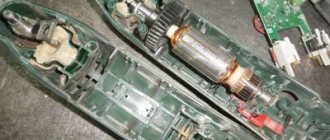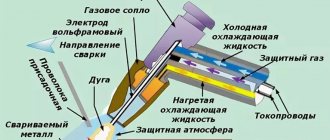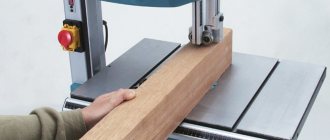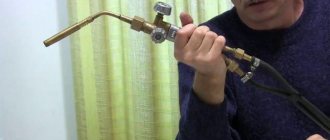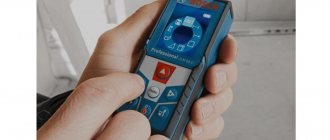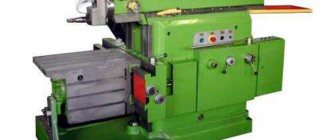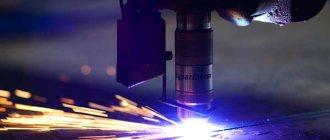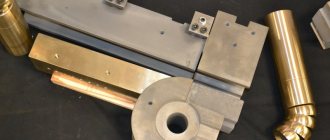04/09/2020 Author: VT-METALL
Issues discussed in the material:
- Main types of plasma cutting of metal
- What you need for plasma cutting from tools and consumables
- What kind of compressor is needed for plasma cutting?
- How to choose a plasma cutter
- What do you need for plasma cutting besides the machine?
What do you need for plasma cutting? This depends not only on the type of metal being processed, but also on the selected processing technology. For cutting with a pure plasma jet, you will need one set of equipment and consumables; for plasma-arc cutting, completely different tools will be needed.
The basic set may look like this: power supply, compressor, plasma torch. And then everything depends on the working conditions and factors described above. You can learn more about what you need to perform plasma cutting of metal from our material.
What is plasma cutting?
Manual plasma cutting is a technological process that involves local heating of metal in order to melt it. Temperatures can rise above 30,000 degrees. During operation, a plasma jet is formed, which cuts through the metal layer. There are several types of plasma cutting:
- Creation of an electric arc. In this case, nitrogen can be used, which improves the conductivity of electric current. Cutting thin metal sheets in this way can be compared to laser processing. Suitable for cutting soft metals, low alloy steels.
- Use of water cooling. When cutting a metal sheet, the cut site is protected by a water flow. It cools the working surface and absorbs fumes formed after heating the metal.
- Adding shielding gas when cutting a workpiece. The cut site is protected from environmental factors, and the quality of the cut is increased.
Plasma metal cutting machines differ in how the workpieces are separated. The first version of the device creates an electric arc, which is closed by the metal being processed. It becomes part of the chain and is cut by heat. The second option does not include the processed material in the chain. It is cut by a jet that forms between two electrodes.
general information
Plasma is an ionized gas, also the fourth state of matter. Modern plasma welding machines are capable of producing temperatures from 5 to 10 thousand degrees Celsius. A device for plasma cutting and welding is often called a plasma torch. The plasma torch can form three types of arc: indirect, mixed or direct.
Before welding, the arc is “twisted” in a special way, since it is prone to decay. After “twisting”, a thin, stable arc is formed, since the gas is ionized very quickly. The end result is a very powerful arc, capable of generating energy at one point. It is at this point that the base metal melts.
A plasma arc can heat almost any metal, regardless of its thickness and composition. Heating to the melting point and even to the boiling point is possible. The only condition is that it is necessary to provide a sufficiently powerful arc.
Additionally, the welding zone is protected with another gas, inert. This can be nitrogen, argon or organic acetone vapor. The torch of the plasma torch is designed in such a way that it can supply shielding gas and plasma simultaneously. So the weld pool is protected while work is being carried out. The metal does not oxidize and the seams are of very high quality.
Design and operating principle
It is easier to understand the operating principle if you know the design of the device. There are several main elements in a plasma cutting machine:
- Power supply. This could be a transformer or an inverter. The first option has one advantage - stable operation, which, when cutting thick sheets, ensures that the voltage is maintained at the same level. The disadvantages include low efficiency, large size, and weight of the power source. The inverter cannot be used to cut thick metal workpieces. However, the equipment has a high efficiency rate, is cheaper than a transformer, and is smaller in size and weight.
- Compressor for forcing air flow. It must supply a vortex flow that will protect the arc formed after turning on the machine.
- The plasma torch is the working part of the apparatus. Consists of a nozzle, electrode, cooling element, cap.
After familiarizing yourself with the design of the machine, you can understand its operating principle:
- After turning on the compressor, a stream of ionized air is supplied to the treatment site.
- A cutting arc is formed between the electrodes. The temperature reaches 30,000 degrees.
- The plasma stream begins to cut the metal sheet. The waste generated during metal melting is blown away by a stream of ionized air.
Video description
Gorynych - plasma welding and cutting machine
So, the gas in the plasma torch is heated by the plasma arc, which leads to its ionization. The volume of hot gas due to the property of thermal expansion increases from 50 to 100 times, which contributes to high-speed ejection from the nozzle. It turns out that kinetic and thermal energy are the main reasons for the appearance of a powerful energy flow in plasma welding. It should also be noted that the plasma torch usually uses DC torches.
There are several types of such units:
- the arc is between the consumable electrode and the weld pool;
- the arc is between the non-consumable electrode and the weld pool, and the plasma is ejected as a gas stream.
Note: Gases used to form plasma are argon (Ar), nitrogen (N2), oxygen (O2) or ordinary air.
Also, all welding of this type differs in current strength:
- small (microplasma) – 0.1-50 A;
- medium - 50-150 A;
- large from 150 A and above.
If the microplasma option allows you to avoid burn-throughs in the parts being welded, then units operating at high currents melt metal up to 8 mm thick in one pass without edge cutting, which makes it possible to cut workpieces without much difficulty. It is quite natural that at medium currents you will be able to both weld and cut metal.
Specifications
The metal plasma cutting machine has many characteristics. However, you should pay attention to some parameters:
- Desktop size. This will determine how large sheets can be cut using a plasma torch. Industrial equipment allows you to make cuts on workpieces up to 60 meters long and up to 25 meters wide.
- Accuracy of the work performed. The devices have a certain error. High-precision machines have deviations in the range from 0.3 to 0.8 mm.
- Additional equipment capabilities.
- Maximum thickness of cut workpieces.
You need to remember about the dimensions of the equipment and its weight.
Types of machines
New plasmatrons are equipped with CNC systems, which reduces the amount of manual labor. There are the following types of mechanisms for manual plasma cutting:
- portal-mounted design;
- portal-console device;
- UVPR stationary with hinges;
- devices installed on workpieces being processed.
Machines can be divided by the number of working heads and operations performed.
Plasma cutting machine
How to choose a metal cutting machine?
Before buying a plasma torch, you need to think about a number of factors that will affect the work with workpieces. These include:
- Thickness of the sheets to be cut.
- Speed of work carried out. Performance will depend on this.
- Control system.
- Availability of additional functions.
- Machine power.
It is better to cut thick sheets on machines equipped with a nitrogen supply. Equipment made of copper parts can withstand long-term loads better. Devices for plasma cutting of metal must be made of high-quality, wear-resistant materials.
The best manufacturers of plasma equipment
Machines for plasma cutting of metal must be selected taking into account global manufacturers. Sales leaders are Hypertherm (America), Kjellberg (Germany). The products of these manufacturers have high productivity, precision of work, reliability, and wear resistance. However, you will have to pay a lot of money for the equipment. Many craftsmen pay attention to Chinese manufacturers, but such models are of low quality.
Price
Plasma cutting torches are expensive equipment. Speaking about price, they can be divided into three groups:
- Simple models - up to 500,000 rubles.
- Industrial machines - up to 1,500,000 rubles.
- Professional devices - up to 5,000,000 rubles.
The price depends on the power, functionality and dimensions of the plasmatrons.
Major machine breakdowns
When operating CNC plasma machines, there are no particular problems with their performance. However, there are several factors that can contribute to the equipment not functioning properly:
- A short circuit in the electrical network can cause the main control boards to burn out.
- Voltage fluctuations, if they exceed the range established by the manufacturer, can also lead to failure of electrical components.
- Physical wear of mechanisms or excessive exceeding of the established service life of parts.
Photo 16. Cutting thin sheet metal
Any malfunctions in the operation of the plasma cutter can be eliminated in a short time, but it is better to perform timely maintenance, change parts with high wear and consumables. This will ensure its stable operation, high productivity and cutting quality.
Operation and repair
Plasma cutting equipment must be operated according to certain rules. Need to:
- Regularly lubricate moving parts if the device is used frequently.
- Check the integrity of the structure before starting.
- Align workpieces at a level so as not to spoil the material.
- Do not attempt to cut thick sheets with low equipment power.
Plasmatrons break down, like other mechanisms. The most common breakdowns:
- Short circuits, burnt wires.
- Wear of moving elements.
- Voltage surges that damage important pieces of equipment.
Wearing structural elements must be replaced with new ones. Wires and electronics require careful inspection and replacement.
Equipment operation
Equipment Manufacturers
Today, plasma CNCs are produced by both foreign and domestic manufacturers. There are cars on sale in different price categories, but what costs more is not always of higher quality.
The domestic manufacturer PURM develops and produces CNC plasma machines taking into account the harsh Russian operating conditions. Equipment of this brand is successfully used by enterprises in central Russia and even in the Far North.
Photo 14. Equipment of the domestic manufacturer PURM
The company is engaged not only in the manufacture of installations, but also in the supply of spare parts, consumables, and components. If desired, you can order installation supervision, commissioning, and post-warranty service.
How to make a plasma cutter with your own hands
If you have the desire, the funds to buy materials, tools, and skills in working with CNC, you can make your own plasma-based cutter. Making homemade equipment for plasma cutting:
- Assemble a stable base for the desktop.
- Secure the support posts and guides.
- Assemble and secure the portal to the guides.
- Install sensors and stepper motors on the moving elements.
- Connect sensors, motors, and the working part of the machine with wires.
- Hide the wiring using cladding.
When the structure is assembled, you need to install a monitor, control panel, and connect the CNC system.
Check the functionality of the moving elements. It is important to accurately calculate the size of the guides so that the stepper motors can move the portal on the desktop without hindrance. A plasma cutter is used to cut thick metal sheets. It is more effective than gas burners, power tools, and hand tools. The price of equipment depends on the size of the working surface, the power of the plasma torch, and additional functions.

